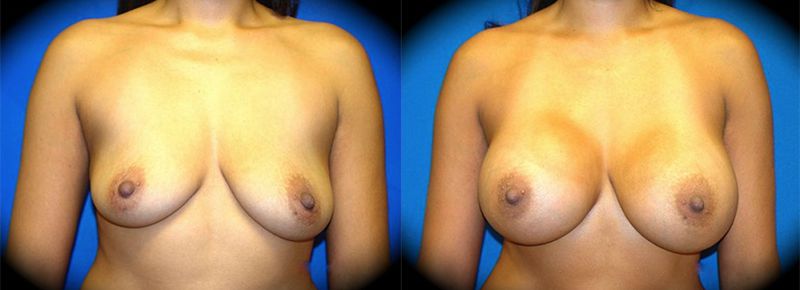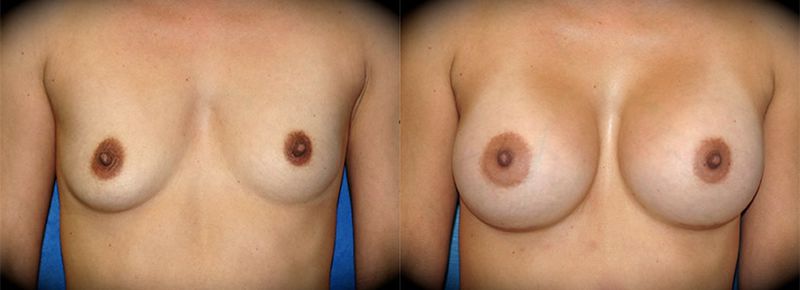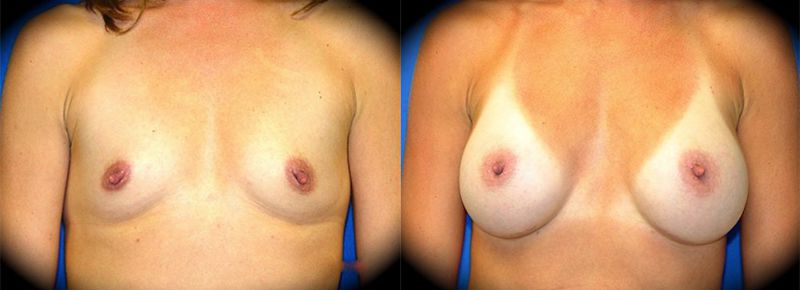How Can Breast Augmentation Help?
Breast augmentation can completely transform the appearance of the body. Many women seek breast enhancement every year to change the shape or size of the breasts. With so many custom options, such as specific incision locations, implant types, and implant placement, breast augmentation patients can achieve breasts that are complementary to their entire physique and designed for their personal body type. Set up a consultation at our Pasadena Office.
Schedule a ConsultationIncision Location
Transaxillary:
- Incisions are made in the natural armpit crease
- Eliminates the risk of scarring on the breasts
- Limited to augmentation with saline-filled breast implants
Periareolar:
- Incisions are made around the dark skin of the areola
- Best for patients with darker areolas because they have less chance of visible scarring
Inframammary:
- Incisions are made under the breasts within the crease where the breast tissue meets the chest
- Ideal for implant placement below or above the chest muscle
- Can be used for saline and silicone filled breast implants
Implant Type
Saline:
- A silicone shell filled with a sterile saltwater solution
- Allows for customized implant sizing and smaller incisions
- Higher risk of implant rippling
- Volume is adjustable during surgery
Silicone:
- A silicone outer shell filled with a silicone gel
- Softer than saline implants, which makes them feel more natural
Gummy Bear (Form Stable):
- A silicone shell filled with a highly cohesive, thick silicone gel
- Maintain their shape
- Offer a firm yet natural feel
- Less likely to ripple or wrinkle
Implant Placement
Submuscular placement:
- Implants are placed behind the chest muscle
- Ideal for women with minimal breast tissue because it provides additional coverage over the implant
- Creates a natural look and feel
- Lower risk of capsular contracture and less visible rippling
- Less likely to interfere with a mammogram
Subglandular placement:
- Implants are placed above the chest muscle and underneath the breast tissue
- Produces more defined cleavage
- Designed to accommodate a larger implant size
- Reduced pain and discomfort
- Shorter recovery time
What are your Concerns?
Recovery
Breast augmentation requires a few days of downtime with limited physical activity. Within a few days, patients can return to work. A surgical dressing or surgical bra will be applied over the breasts that should be worn for several weeks to reduce swelling and provide support. Patients can go home a few hours after the procedure. It is important to follow the specific instructions provided by Dr. O’Toole to ensure the safest recovery possible.
Cost
The cost of breast augmentation is dependent on the extent of the surgery, the type of implants used, and other factors such as facility and anesthesia fees. According to the American Society of Plastic Surgeons (ASPS), the average surgeon’s fee for breast augmentation surgery in 2014 was $3,708. According to the American Society for Aesthetic Plastic Surgery (ASAPS), the average surgeon’s fees in 2014 was $3,848 for silicone breast implants and $3,441 for saline breast implants.
Pain
Once anesthesia wears off, some patients may experience minimal pain or discomfort. Pain can be controlled with prescription medications. The breasts may feel tight and sensitive to the touch, but once swelling alleviates, the breasts will feel more normal.
Scarring
Depending on the incision location, scarring will either be under the armpit, under the breast crease, or around the areola. Over time and as the body recovers, scarring will fade and be easily concealable.
Results
The results from breast augmentation are immediately noticeable. As soon as the post-surgical swelling reduces and incision lines fade, patients can expect to achieve breasts that are round and full as well as flattering to their entire physique.
Frequently Asked Questions
-
Who makes a good candidate for breast augmentation surgery?
Breast augmentation is an excellent procedure for women looking to address breasts that are small, lacking shape, or asymmetrical. Since breast augmentation is a surgical procedure, it is important that patients are in good health and have realistic expectations.
-
What type of anesthesia is used for breast augmentation?
Breast augmentation is performed using intravenous sedation and general anesthesia.
-
How long do the results of breast augmentation last?
The results from breast augmentation can last for many years; however, they are not designed to last a lifetime. The breasts can fluctuate based on pregnancy, weight loss/gain, and aging. Some patients may need to have their breast implants replaced at some point in the future.
-
What are the potential side effects of breast augmentation?
There are some side effects and risks associated with breast augmentation. Some of these may include:
- Infection
- Bleeding
- Poor scarring
- Pain
- Implant leakage
- Capsular contracture
- Anesthesia risks
-
Can breast augmentation be combined with other procedures?
Breast augmentation is commonly performed along with breast lift surgery in cases where a patient has sagging breasts that lack fullness. For overall body improvement, body contouring procedures, such as liposuction and tummy tuck surgery, can be performed along with breast augmentation







